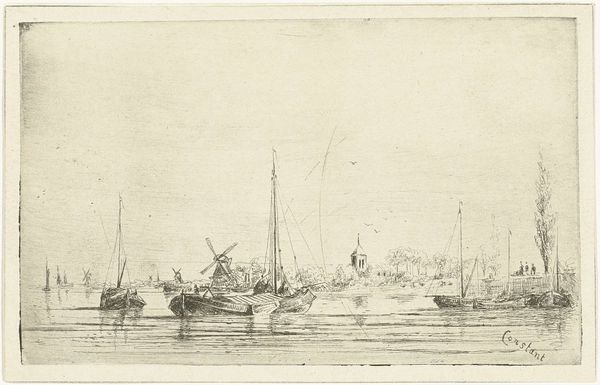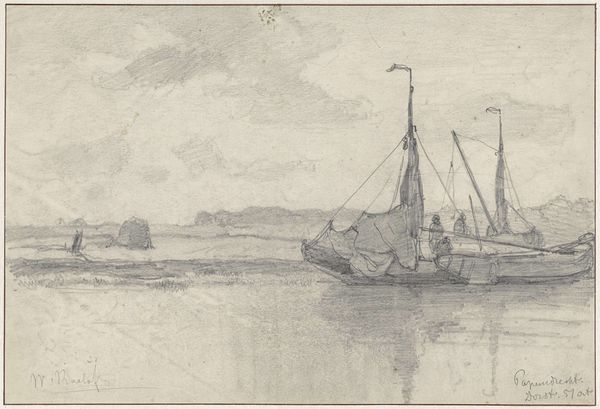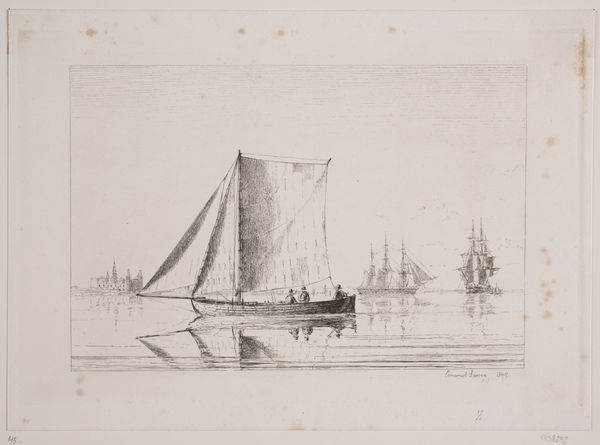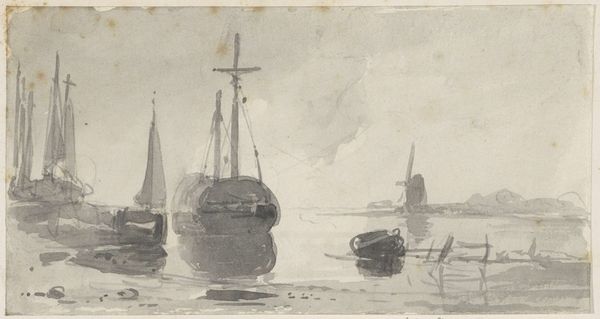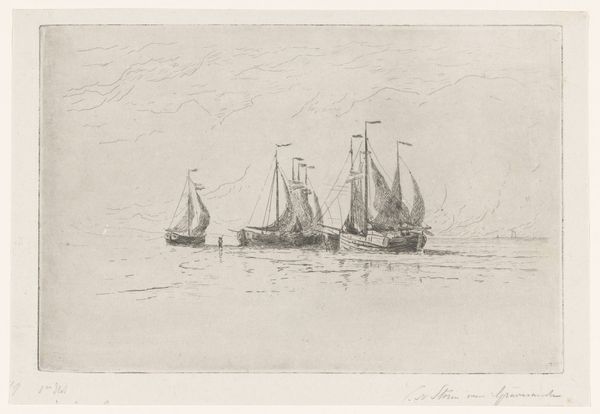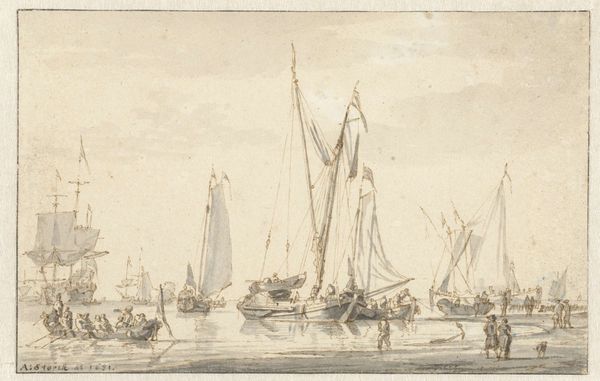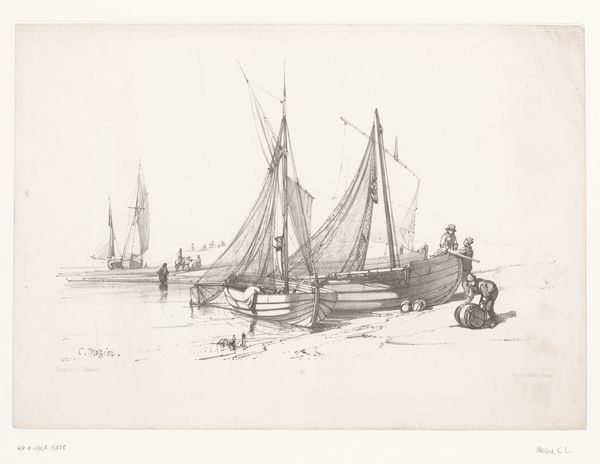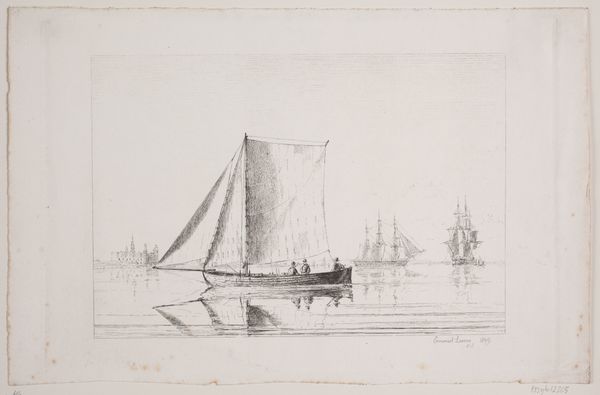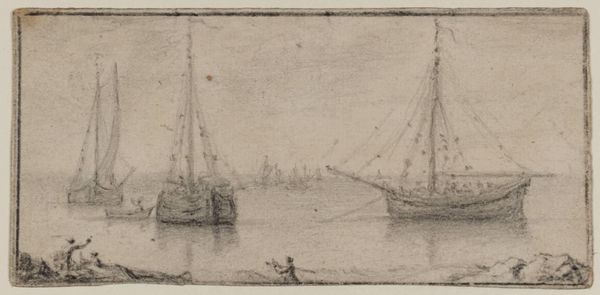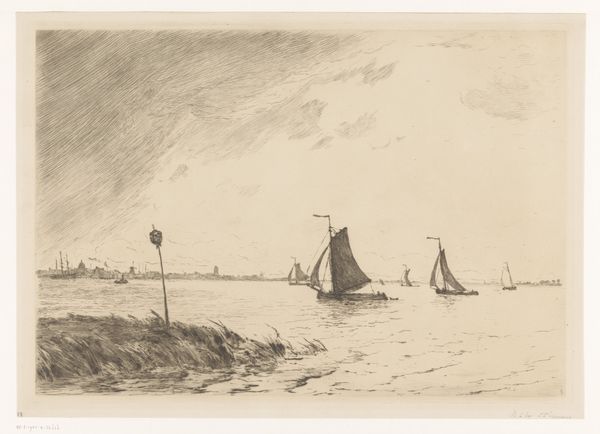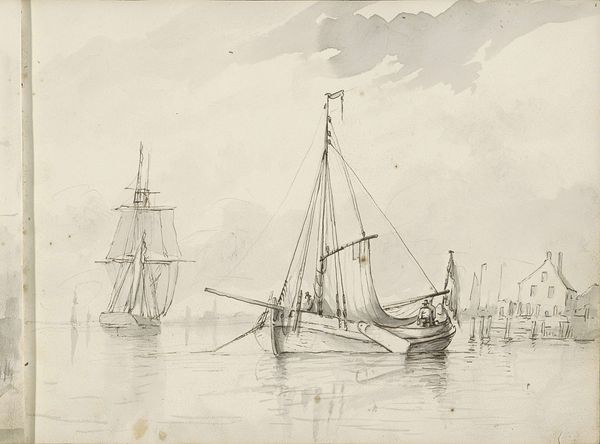
drawing, ink, pencil
#
drawing
#
amateur sketch
#
quirky sketch
#
dutch-golden-age
#
sketch book
#
landscape
#
figuration
#
personal sketchbook
#
ink
#
idea generation sketch
#
sketchwork
#
romanticism
#
pen-ink sketch
#
pencil
#
sketchbook drawing
#
genre-painting
#
sketchbook art
#
realism
#
initial sketch
Dimensions: height 41 mm, width 70 mm
Copyright: Rijks Museum: Open Domain
Cornelis Steffelaar made this etching, "Zeilschepen op open water," using metal, acid, and ink. The etching process involves coating a metal plate with a waxy, protective layer, drawing through the layer to expose the metal, and then using acid to bite into the exposed lines, creating grooves that hold ink. The materiality of the metal plate allows for the creation of fine, detailed lines, visible in the delicate reflections on the water and the rigging of the ships. This wasn't about bold gestures, but rather the skilled labor involved in precisely controlling the etching process. Steffelaar’s artistic choices—the subject matter, the etching technique—reflect the Netherlands' deep connection to the sea and its maritime industry. The image is suggestive of bustling trade and naval power; such seascapes were popular among the rising merchant class, who saw their own economic activities reflected in these images. This etching, therefore, is more than just a pretty picture, but a product of labor and trade. It reflects the social values of the time. By understanding its materials, making, and context, we get a richer sense of the artwork's full meaning.
Comments
No comments
Be the first to comment and join the conversation on the ultimate creative platform.
